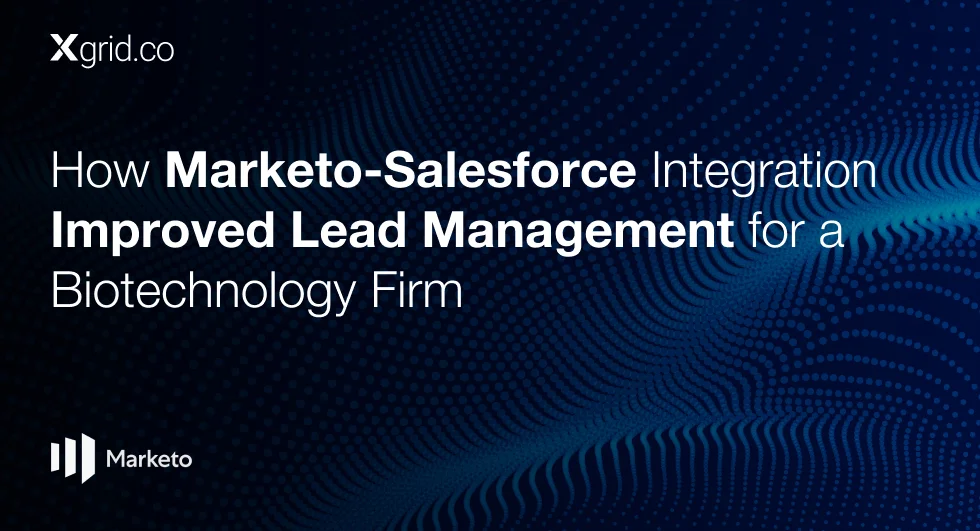Why Following the Money is the Key to Success with Marketo and Martech
By placing revenue at the core of your marketing technology (Martech) decisions, companies can align their tools, like Marketo, with business outcomes, driving better ROI.
Key Points
- Why “follow the money” is a powerful Martech strategy.
- How to align your Marketo instance with revenue goals.
- Practical steps to build a revenue-focused Martech stack with Marketo.
- The role of data in tracking financial success through Marketo.
Follow the Money: A Simple Yet Powerful Strategy
Frans simplifies the complexity of Martech into one central idea: follow the money. This mindset ensures that every tool or decision directly contributes to revenue growth. When using Marketo, it’s essential to ask: How will this impact revenue?
“I always follow the money. When you understand what drives revenue, you can make smarter decisions about which tools to use,” says Frans.
By focusing on customer value rather than being distracted by features or trends, marketers using Marketo can sharpen their focus on activities that move the needle.
Aligning Marketo with Revenue Goals
To ensure your Marketo setup is aligned with revenue goals, the first step is mapping out your customer journey. Identify the touchpoints in the buyer’s journey that generate the most revenue. Marketo’s lead scoring, engagement programs, and attribution tools can help you pinpoint which campaigns and touchpoints contribute the most value.
“Reverse-engineer your customer journey to figure out which touchpoints drive the most revenue. Then focus your Martech stack on supporting those touchpoints,” Frans suggests.
By optimizing your Marketo instance around high-revenue touchpoints, your Martech investments will directly support your business outcomes.
Practical Steps to Build a Revenue-Focused Martech Stack in Marketo
-
-
- Track Customer Behavior: Use Marketo’s analytics and reporting features to follow customer journeys. Identify touchpoints like email campaigns, forms, or landing pages that are driving the most revenue.
- Focus on Key Revenue Drivers: Leverage Marketo’s segmentation and personalization capabilities to prioritize the most profitable customer segments and nurture programs.
- Eliminate Vanity Metrics: Shift your focus from clicks and opens to financial metrics. Use Marketo’s Revenue Cycle Modeler and multi-touch attribution to track conversions, pipeline value, and customer lifetime value (CLV).
-
The Role of Data in Tracking Financial Success Through Marketo
Data is the foundation for understanding revenue drivers. With Marketo, you can collect rich data on customer interactions and segment your audience based on engagement, helping you understand which actions directly correlate with revenue.
“You don’t need a lot of data points. Focus on the ones that tell you where your revenue comes from,” Frans emphasizes.
Leveraging Marketo for Revenue Tracking and Analytics
Marketo’s robust data-driven tools, including CRM integration, advanced analytics, and attribution modeling, allow you to track which campaigns and touchpoints generate revenue. Integrating Marketo with tools like Salesforce or Google Analytics helps create a unified view of your financial success.
By using Marketo’s capabilities for tracking and optimizing marketing efforts, you can ensure your Martech stack is aligned with revenue-driving activities, ultimately boosting your ROI.
Downloads
Article (PDF-276 KB)MOST POPULAR INSIGHTS
- How Marketo Strengthened Data Hygiene and Marketing Efficiency for a Global Telecom Company
- How Marketo-Salesforce Integration Improved Lead Management for a Biotechnology Firm
- How a Tech Company Used Marketo to Refine ABM Strategies for Sales Engagement
- How Marketo Campaigns Were Streamlined with Templates and Tokens
- How Marketo Solidified Marketing Insights with Custom Attribution Models
Related Articles
Related Articles

Established in 2012, Xgrid has a history of delivering a wide range of intelligent and secure cloud infrastructure, user interface and user experience solutions. Our strength lies in our team and its ability to deliver end-to-end solutions using cutting edge technologies.
OFFICE ADDRESS
US Address:
Plug and Play Tech Center, 440 N Wolfe Rd, Sunnyvale, CA 94085
Pakistan Address:
Xgrid Solutions (Private) Limited, Bldg 96, GCC-11, Civic Center, Gulberg Greens, Islamabad
Xgrid Solutions (Pvt) Ltd, Daftarkhwan (One), Building #254/1, Sector G, Phase 5, DHA, Lahore




